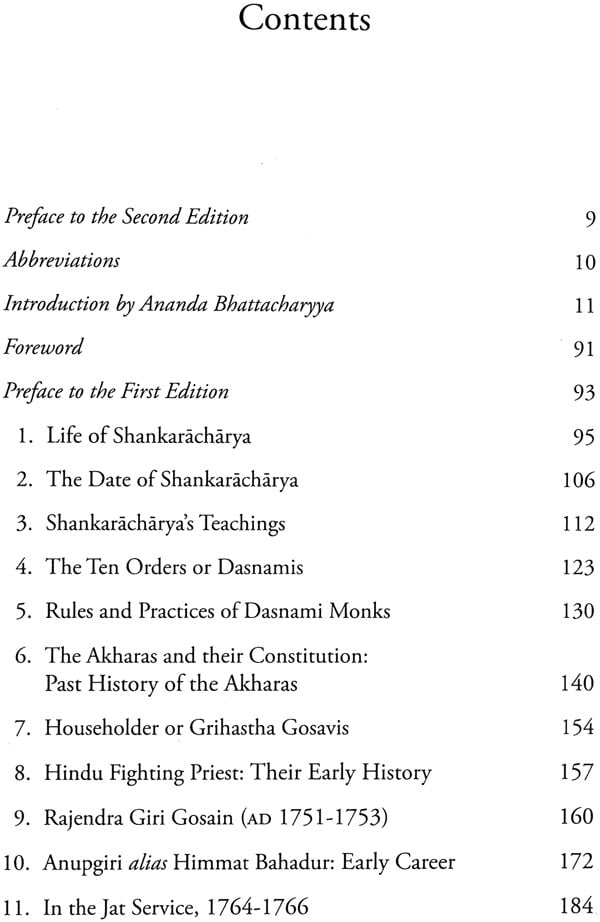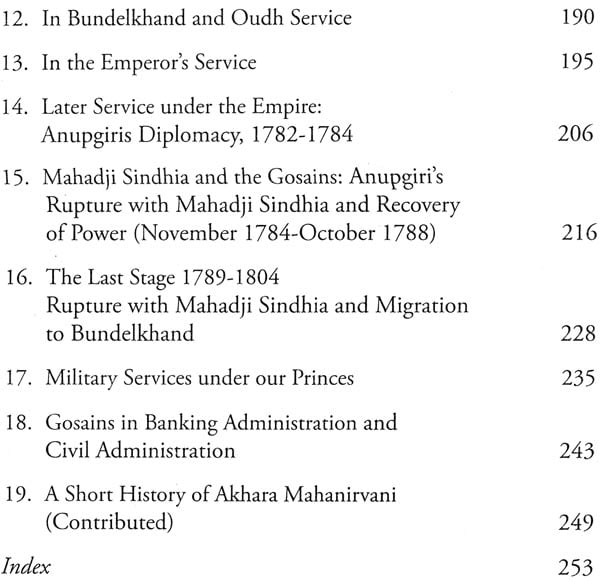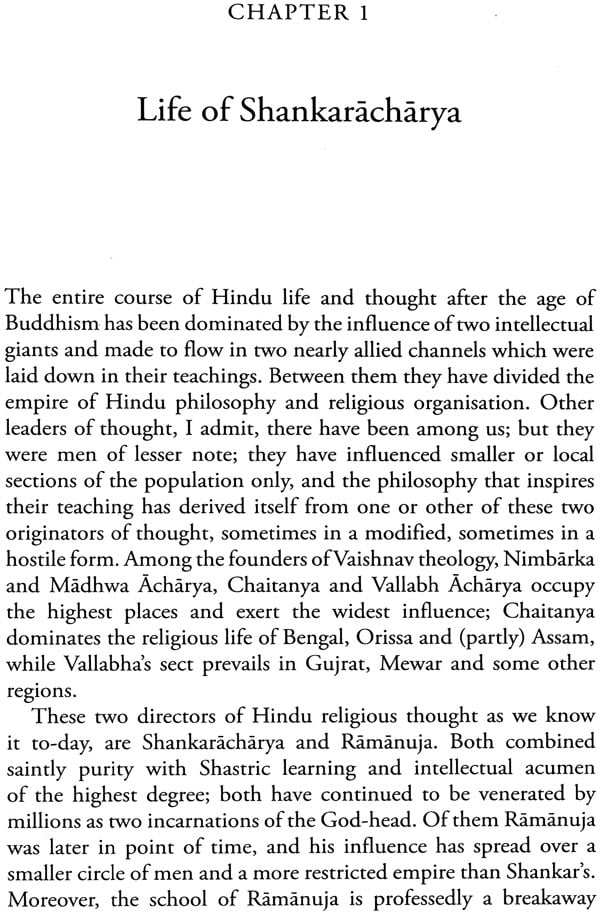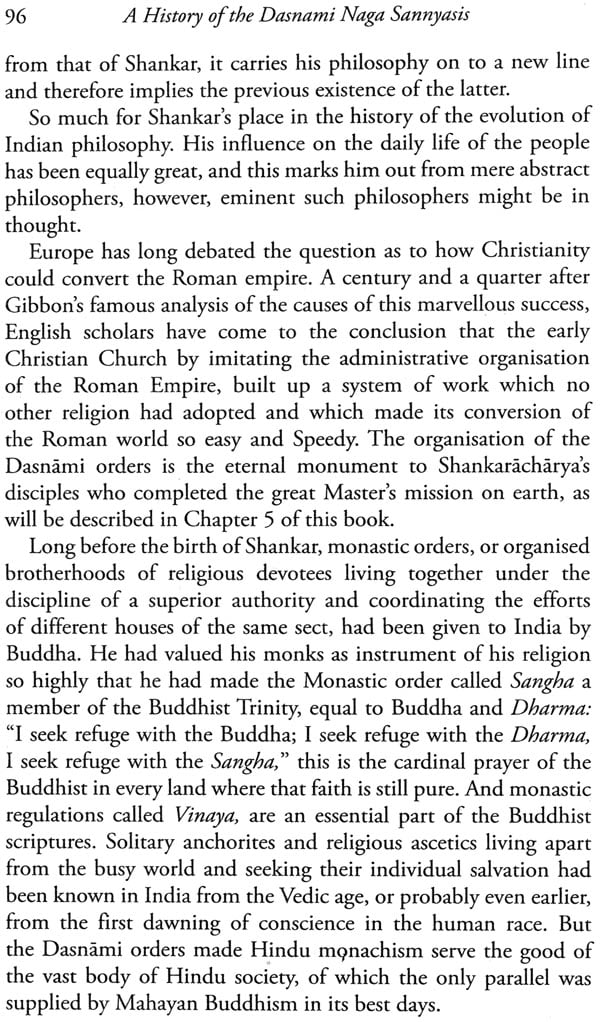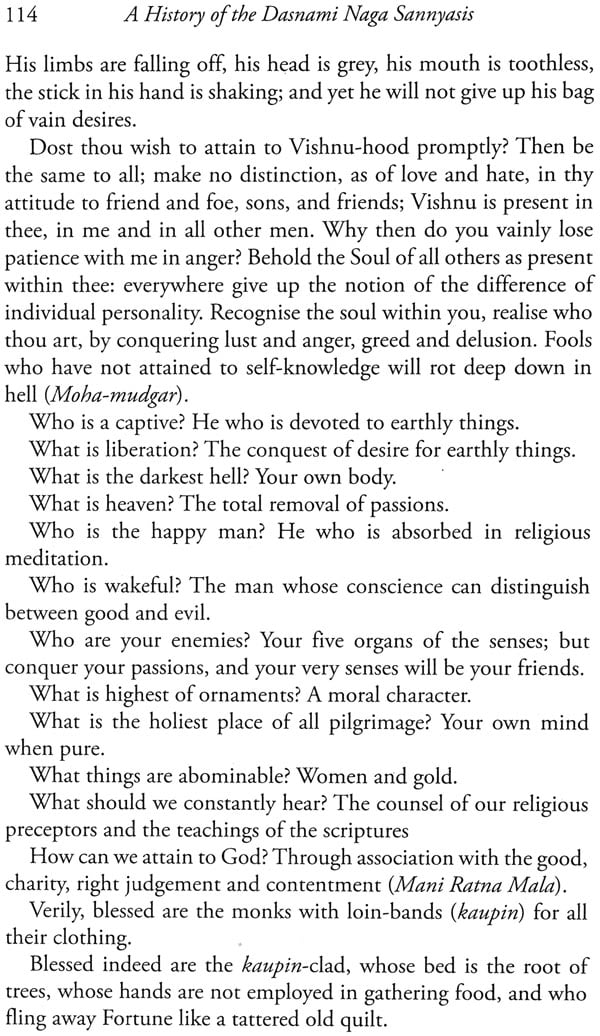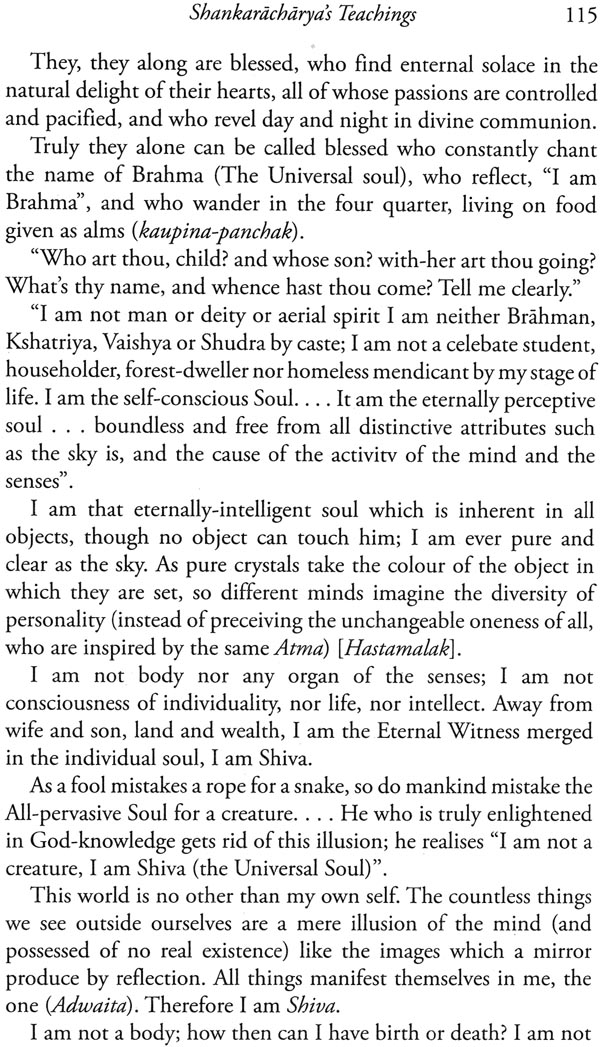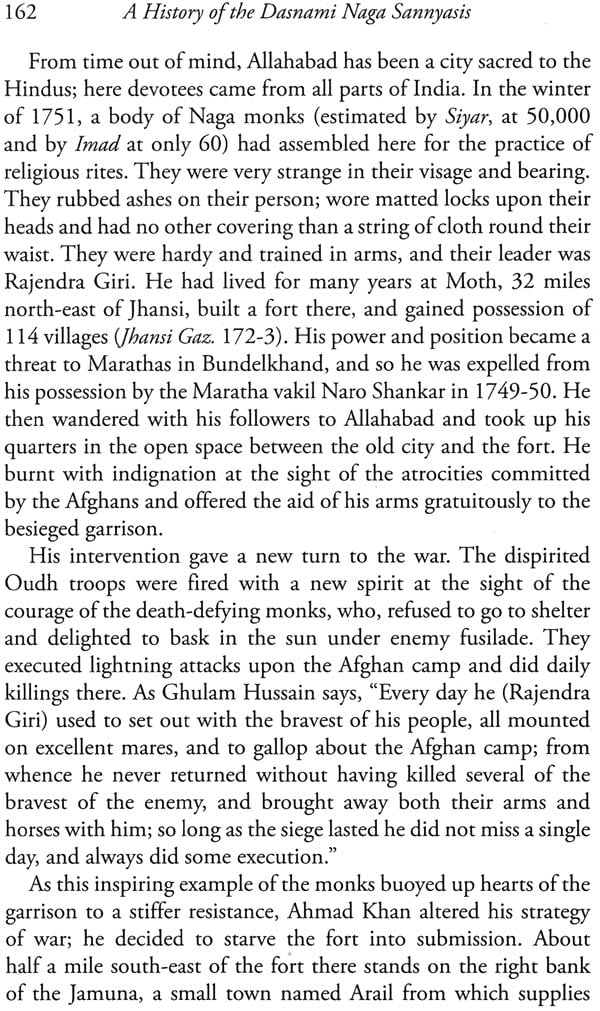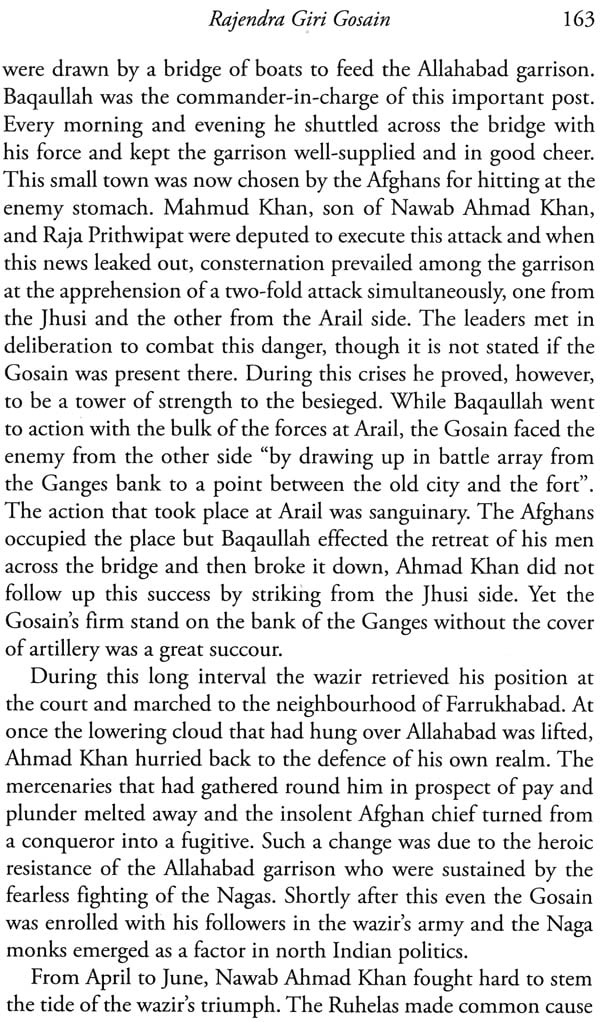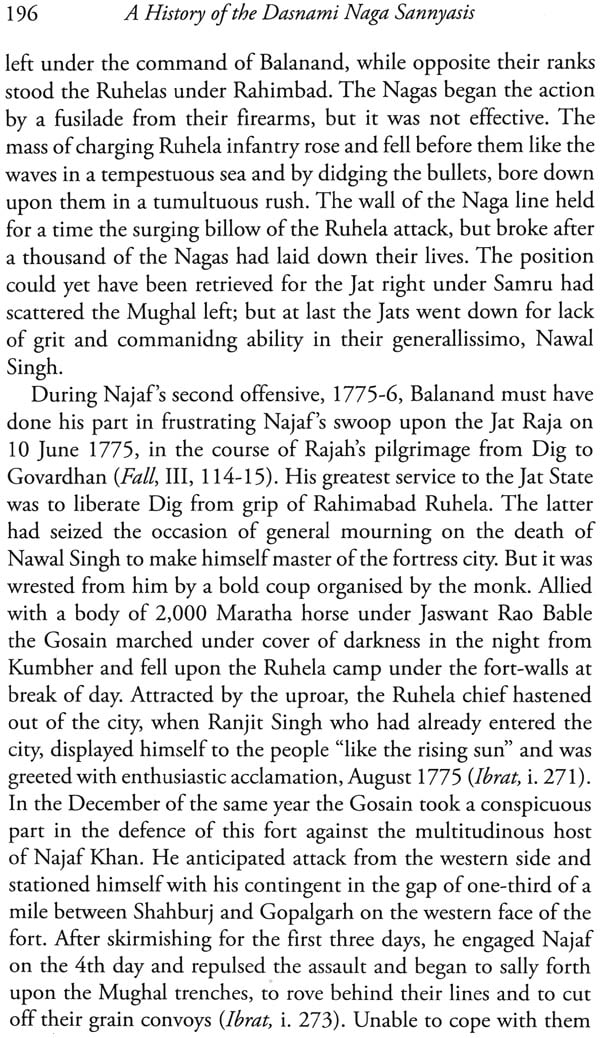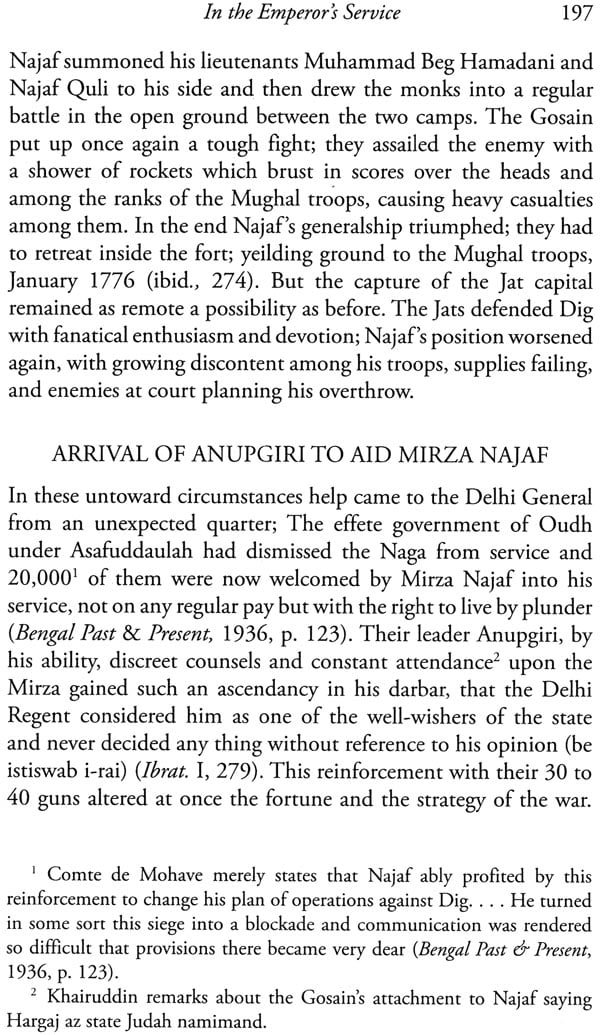
A History of The Dasnami Naga Sannyasis
Book Specification
| Item Code: | NAR356 |
| Author: | Ananda Bhattacharyya |
| Publisher: | Manohar Publishers and Distributors |
| Language: | English |
| Edition: | 2018 |
| ISBN: | 9789350981986 |
| Pages: | 260 |
| Cover: | HARDCOVER |
| Other Details | 9.00 X 6.00 inch |
| Weight | 460 gm |
Book Description
Organized Naga Military activity originally flourished under state patronage. During the latter half of the sixteenth century and the early part of the seventeenth century, a number of bands of fighting ascetics formed into akharas with sectarian names and identities.
The Dasnami Sannyasis constitute perhaps the most powerful monastic order which has played an important part in the history of India. The cult of the naked Nagas has a long history. The present volume aims to explore new findings which are available in various archives and repositories in order to fill up the lacuna in Jadunath Sarkar’s work on the subject as elaborated in the present introduction.
Sir Jadunath Sarkar (1870-1958) was one of the greatest historians of Medieval and Modern India in the first half of the twentieth century. He was the author of such classic works as The Fall of the Mughal Empire (4 vols.); History of Aurungzib (5 vols.) and Shivaji and his Times. He taught at Patna University between 1899-1926 and was made Vice-Chancellor of Calcutta University in 1926.
Ananda Bhattacharyya is Assistant Director of the West Bengal State Archives. His many publications include Adivasi Resistance in Early Colonial India (2017); Remembering Kornagata Maru: Official Reports and Contemporary Accounts (2016); Notes on the Races, Castes and Trades of Eastern Bengal (2016) and Sannyasi and Fakir Rebellion in Bengal: Jamini Mohan Ghosh Revisited (2014).
The cult of the naked Nagas has a long history. The Dasnamis were divided into Gossains and Nagas. The geographical distribution of Sannyasis', maths and akharas highlighted their area of activities.
The present volume aims to explore new findings which are available in various Archives and repositories in order to fill up the lacuna and shortcomings of Jadunath Sarkar's work on the subject as elaborated in the present introduction. It is unclear as to say why Sir Jadunath did not consult the British East India Company's correspondences, rather, giving much importance to Persian and Marathi sources. In order to demonstrate the idea of Hindutva Sir Jadunath glorified the martial valour of the Dasnami Naga Sannyasis. Two-thirds of the book of Sir Jadunath has thrown light on their involvement in warfare and military activities on behalf of the regional powers. While discussing their mercenary activities, Sir Jadunath was also silent about their involvement in the famous palace conspiracy at the Cooch Behar native state. The present introduction as appended with Sir Jadunath's monograph will justify the multi-dimensional aspects of the Dasnami Nagas including their trade and moneylending involvement.
The editor of the present volume is highly indebted to archival officers and staff of the National Archives of India, New Delhi, Jhumur Sengupta, Archivist, of the West Bengal State Archives, Kolkata, Allahabad Regional Archives, U.P. State Archives, Lucknow, Bangladesh National Archives, Dhaka and the various akhara organizations for rendering valuable services in retrieving the resources for scholarly purposes. Finally, I would like to thank Sri Ramesh Jain, for agreeing to reprint the book of Jadunath Sarkar.
The Dasnami Sannyasis constitute perhaps the most powerful monastic order, which has played an important part in the history of India. The cult of the naked Nagas has a long history. Most of the Nagas belong to the Dasnami group organized by the Shankaracharya, the great of tenth century. They are divided into two sections; the shastradharis, who specialize in sacred lore, and the astradharis, who bear arms. The Shankaracharyas have combined saintly purity with shastric learning and intellectual acumen of the highest degree. At Benares, the Shankaracharya's dynamic exposition of the shastras and his persuasive commentary on the Brahmasutra and the supernatural genius displayed by such a youthful teacher, created the greatest astonishment among the circle of scholars and devotees who had assembled there from all parts of India. The Shankaracharya passed many years at Sringeri, composing books and teaching his followers, like, Hastamalak, Mandan, Totoka and Padmapad.
Under the circumstances it is prudent to define the connotation of the term Dasnami. Dasnami means ten names, viz., Giri, Puri, Bharati, Aranya, Ban, Saraswati, Tirtha, Ashram, Sagar and Parbat. They were commonly known as Gossains (settled and married Sannyasis) and Nagas (naked). Sources are available about Giri, Puri and Bharati both in official correspondence and census reports. The actual jurisdiction of the Dasnamis can be clearly understood from the official sources preserved in the Archives of West Bengal, National Archives of India, Uttar Pradesh State Archives, Rajasthan State Archives, Bikaner and Gujarat State Archives. Besides the official sources, it is necessary to consult the Persian and Urdu sources either memoirs or the chronicles, written by the court poets of the regional princedoms. Scholars have also failed to retrieve the Marathi and the Hindi sources, mainly available in the akharas and archives widely scattered in various parts of western India. Marathi sources and works of Hindi literature' are also useful for understanding the history of the Dasnami Sannyasis. The importance of the akhara records are considered as useful source materials to arrive at a clear understanding of the subject.
The Marathi, Persian and English sources clearly indicate that they belonged to present-day Uttar Pradesh, especially Awadh, Prayag, Mirzapur, Varanasi, Jhansi, Punjab, Maharashtra, Gujarat, and Rajasthan. In Bengal, particularly in Dinajpur and Malda in the mid-nineteenth century a group of Gossains were found. The Census Report classified 187 Sannyasis in Dinajpur and 843 Gossains in Malda who were basically from the Giri suborder and engaged in trade. Oral sources are other important resources for understanding the identity, culture and activities of the Dasnami Naga Sannyasis. Besides the religious endowments, the resident Sannyasis acquired valuable properties all-over India, including in various parts of Bengal, particularly Mymensingh and Sherpur in Bagura districts and earned their livelihood principally by moneylending, trade and mercenary activities. Even during my fieldwork undertaken on different occasions large landed properties held by the Sannyasis of the Giri sect were found in the districts of Bagura, Malda, Rangpur and Mymensingh. The zamindar of Sherpur in Bagura granted a large area of land to Chandan Gin Sannyasis. This area presently is known to the local people as Subarnar Char. Due to the non-availability of abundant source materials it is very difficult to reach the conclusion that when exactly the Dasnamis began their ascent in Indian history. The Dasnami Sannyasis were so militant that their fighting propensity was a basic characteristic of them. The Mughal Emperor Akbar in 1567 witnessed a fight between the armed Sannyasis of `Giri’ and 'Puri' suborders at Thaneshwar. The basic reason for entering into armed conflict was over the collection of contribution from the pilgrims who had come there to bathe in the sacred river on a Kumbh Jog, when the sun enters the Zodiac sign of Capricorn (Maim). J.N. Farquhar thought that the traditional account of the revival of the armed Sannyasis began in the mid-sixteenth century when both the Sannyasis and Fakirs went about with arms and took part in frequent warfare. He also said when there was no warfare they were involved into armed conflict with each other. Farquhar accused the Fakirs for attacking and killing the Sannyasis 'as representatives of Hinduism'. He also said, 'as ascetics, these Fakirs held a privileged position and were thus protected from violence and also from interference on the part of the Government' [Muhammedan]. He also went on to say that the Sannyasis being oppressed and hunted by the Muslims felt the need for their own protection. Madhusudan Saraswati, a renowned Sannyasi famous for his learning and scholarship met Emperor Akbar and enquired of him 'whether anything could be done for the protection of the ancient order to which he belonged'. Raja Birbal being instructed by Mughal emperor Akbar advised Madhusudan Saraswati to initiate a large number of non-Brahmins for strengthening their order and also to keep arms for fighting against Malang Fakirs. He also said it was the turning point when the Sannyasis began to keep arms and some of them seized lands and settled down.
**Contents and Sample Pages**
